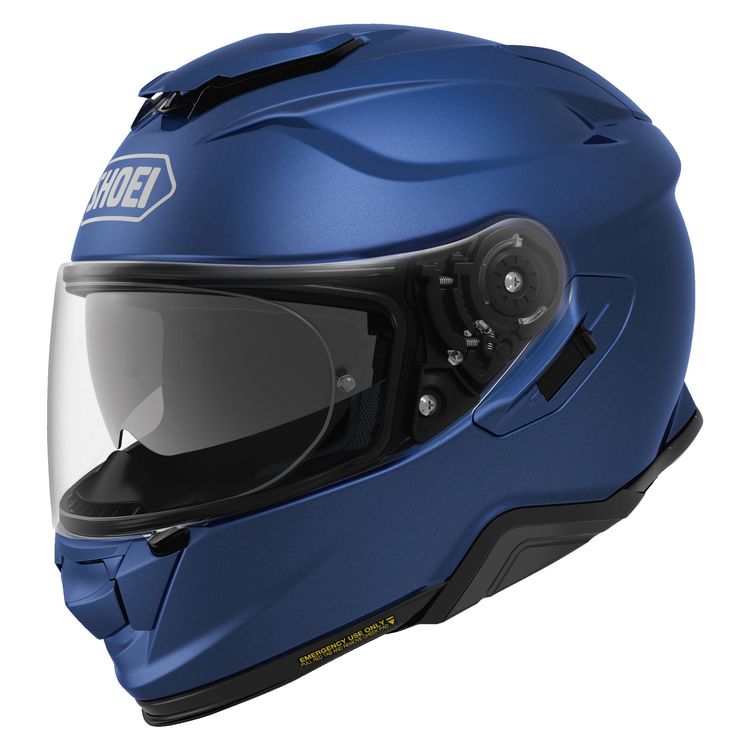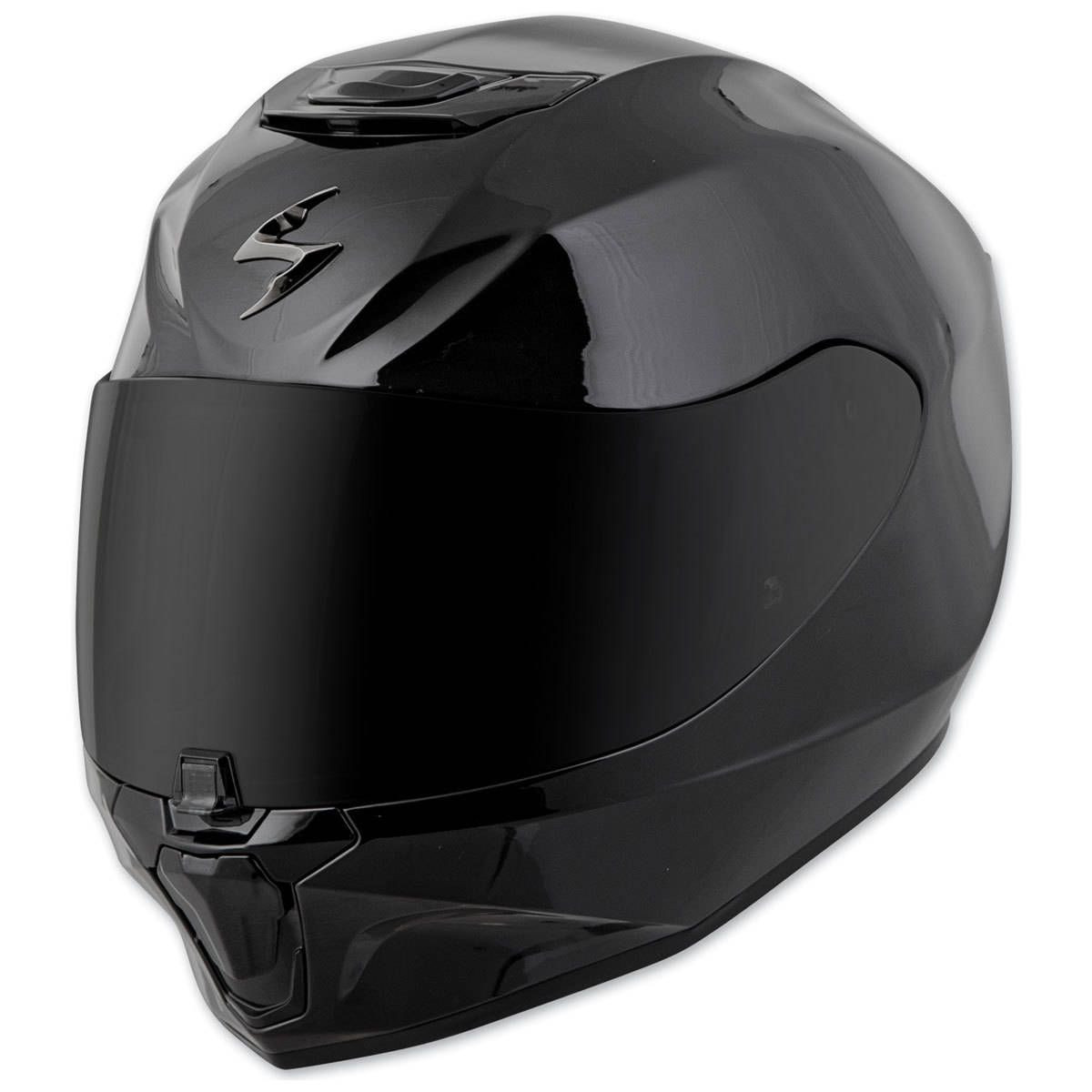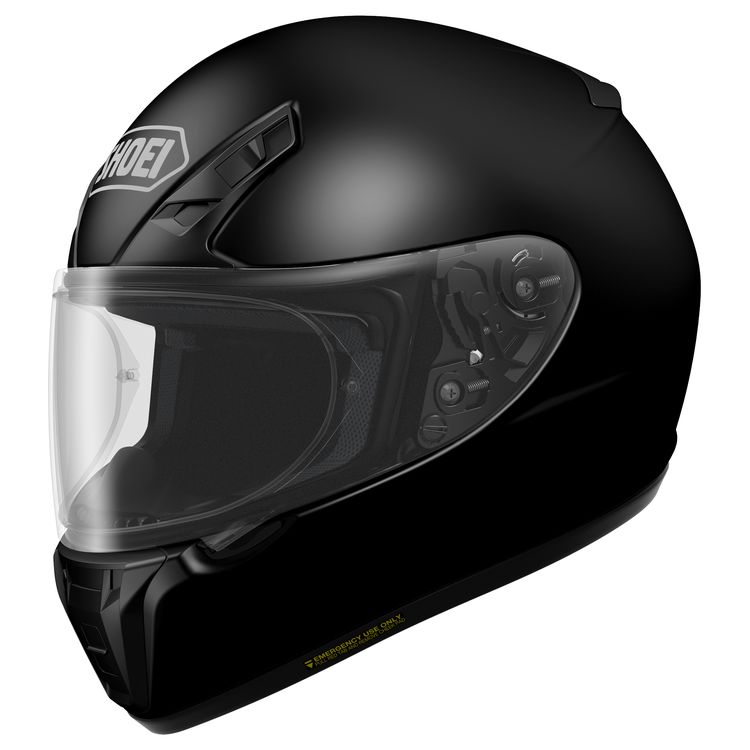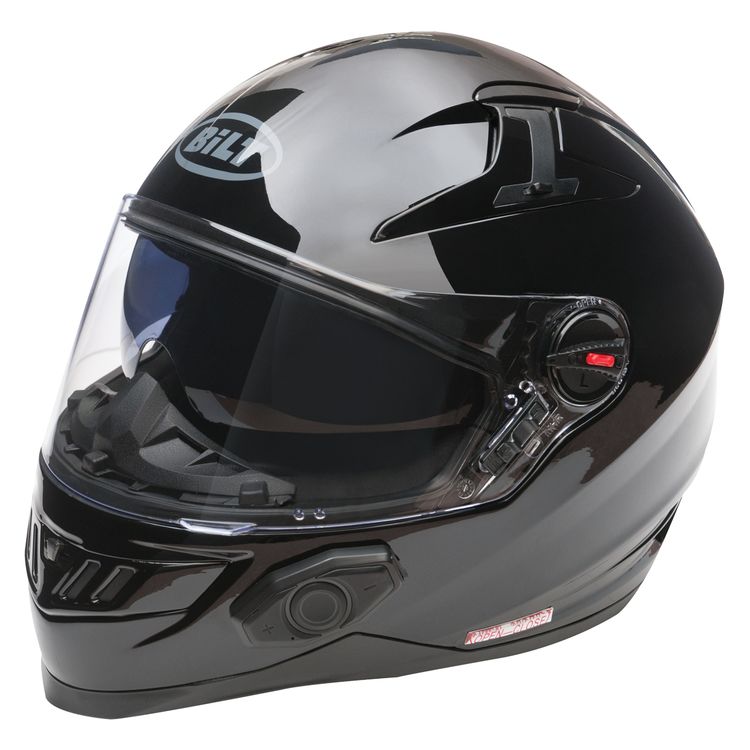May 28, 2025
Best Beginner Motorcycle Helmet: Essential Guide for New Riders
Introduction
Embarking on the journey of motorcycling is exhilarating, but one of the most critical choices a new rider must make is selecting the best beginner motorcycle helmet. A motorcycle helmet is not just a mere accessory; it is a vital piece of safety equipment that can protect you from severe injuries in the event of an accident. However, with a vast array of helmets available in the market, determining which one is best suited for a beginner can be daunting. In this comprehensive guide, we will explore the key factors to consider when choosing a motorcycle helmet, highlight some of the top-rated options, and provide essential tips to ensure your helmet offers maximum protection, comfort, and style.
Key Features to Consider When Choosing a Beginner Motorcycle Helmet
Selecting the right helmet involves evaluating several important features. By focusing on these aspects, you can ensure that your helmet provides the necessary protection, comfort, and suitability for your riding style.
Safety Certifications and Standards
The first and foremost feature to consider is whether the helmet meets established safety certifications. Look for helmets that comply with DOT, ECE, or other relevant standards. These certifications indicate that the helmet has undergone rigorous testing and meets specific safety criteria, providing assurance of its protective capabilities.
Helmet Type: Full-Face, Open-Face, Modular, and More
There are various types of motorcycle helmets, each offering different levels of protection and comfort. Understanding the differences can help you choose the best option for your needs:
- Full-Face Helmets: Provide the highest level of protection, covering the entire head and face. They are ideal for beginners as they offer comprehensive safety.
- Open-Face Helmets (3/4 Helmets): Cover the top, back, and sides of the head but leave the face exposed. They offer greater visibility and ventilation but less protection compared to full-face helmets.
- Modular Helmets: Combine the protection of full-face helmets with the convenience of open-face helmets by featuring a movable chin bar. They offer versatility but may be slightly heavier.
- Half Helmets: Provide minimal protection by covering only the top of the head. They are less suitable for beginners due to their limited protection.
Choosing the right helmet type depends on your riding style, comfort preferences, and the level of protection you desire.
Material and Construction: ABS, Polycarbonate, Fiberglass, and Carbon Fiber
The material of the helmet significantly influences its durability, weight, and overall safety. Common materials include:
- ABS (Acrylonitrile Butadiene Styrene): Affordable and lightweight, suitable for casual riders.
- Polycarbonate: Offers good impact resistance and affordability, making it a popular choice for beginners.
- Fiberglass Composite: Stronger and more durable than ABS and polycarbonate, providing better protection.
- Carbon Fiber: Extremely lightweight and durable but more expensive, suitable for serious riders and those seeking top-tier protection.
For beginners, polycarbonate and fiberglass composite helmets are often recommended due to their balance of safety, durability, and affordability.
Fit and Comfort: Ensuring a Proper Fit
A helmet that fits correctly is essential for both comfort and safety. An ill-fitting helmet can cause discomfort, distractions, and may not provide adequate protection in the event of an impact. When trying on helmets, ensure that:
- The helmet sits level on your head without tilting forward or backward.
- It fits snugly without causing pressure points or pain.
- You can move the helmet slightly without it feeling too loose.
- The padding is comfortable and absorbs sweat effectively.
Most manufacturers provide size charts to help you determine the right size based on measurements of your head circumference. It’s advisable to try on several helmets to find the one that offers the best fit.
Ventilation and Cooling Systems
Effective ventilation is crucial for maintaining comfort during rides, especially in warm weather. Look for helmets with multiple vents that allow airflow through the helmet, reducing heat buildup and preventing fogging of the visor. Features to consider include:
- Intake vents at the front and sides of the helmet.
- Exhaust vents at the back to allow hot air to escape.
- Removable and washable inner liners to keep the helmet fresh.
Proper ventilation enhances the overall riding experience by keeping you cool and comfortable.
Visor and Anti-Fog Features
The visor is an important component of any motorcycle helmet, influencing visibility and protection from the elements. When selecting a helmet, consider the following visor features:
- Types of Visors: Clear visors are suitable for all-weather conditions, while tinted visors reduce glare in bright sunlight. Some helmets offer interchangeable visors for versatility.
- Anti-Fog Coating: An anti-fog coating on the inside of the visor prevents fogging, ensuring clear vision in varying temperatures and humidity levels.
- UV Protection: A visor with UV protection shields your eyes from harmful ultraviolet rays, enhancing safety during daytime rides.
Weight and Comfort: Reducing Fatigue
The weight of the helmet affects how comfortable it is during long rides. A lightweight helmet minimizes strain on your neck and reduces fatigue, allowing you to focus more on the road. Opt for helmets made from lightweight materials like polycarbonate or fiberglass composite to enhance comfort without compromising safety.
Additional Features: Bluetooth Compatibility, Removable Liners, and More
Modern motorcycle helmets come with a variety of additional features that enhance functionality and convenience. Some of these include:
- Bluetooth Compatibility: Enables hands-free communication, navigation, and music streaming, providing a seamless riding experience.
- Removable and Washable Liners: Easy-to-clean liners maintain hygiene and extend the helmet’s lifespan.
- Adjustable Conductive Pads: Allow you to adjust the fit and comfort level according to your preferences.
While these features are not essential, they can significantly enhance your overall riding experience.
Top-Rated Best Beginner Motorcycle Helmets in 2025
To help you navigate the plethora of options, we have curated a list of top-rated best beginner motorcycle helmets for 2025. These helmets are selected based on their safety features, comfort, durability, and value for money.
1. Shoei Rider
The Shoei Rider is often hailed as the best beginner motorcycle helmet due to its exceptional safety features and supreme comfort. It features a lightweight polycarbonate shell, excellent ventilation, and a large visor with anti-fog and UV protection. The interior is plush and removable for easy washing, making it a hygienic choice for new riders.
2. Bell Qualifier DLX
Bell Qualifier DLX offers a great balance between affordability and performance. Equipped with a durable ABS shell, multiple ventilation channels, and a drop-down sun visor, this helmet is ideal for beginners. The interior is padded for maximum comfort, and the helmet meets DOT safety standards, ensuring reliable protection.
3. HJC CL-17
HJC CL-17 is a versatile and reliable helmet suitable for various riding styles. It boasts a lightweight polycarbonate shell, enhanced ventilation system, and a large face shield with anti-fog technology. The CL-17 also features a removable and washable liner, making it easy to maintain cleanliness and comfort.
4. AGV K1
For beginners seeking a combination of style and safety, the AGV K1 is an excellent option. It features a robust fiberglass composite shell, superior ventilation, and a wide field of vision. The internal padding is designed for comfort, and the helmet’s sleek design makes it a fashionable choice for new riders.
5. Scorpion EXO-R420
Scorpion EXO-R420 is a budget-friendly helmet that doesn’t compromise on safety or comfort. It features a polycarbonate shell, adjustable ventilation, and a clear visor with anti-fog coating. The EXO-R420 also incorporates a moisture-wicking interior liner, ensuring you stay comfortable during long rides.
6. LS2 Stream
LS2 Stream stands out for its lightweight design and excellent ventilation. With a robust polycarbonate shell, this helmet offers reliable protection and comfort. The Stream also features a drop-down sun visor, a large ventilation system to keep you cool, and an easy-to-adjust fit, making it a perfect choice for beginners.
7. Shark Skagen GT
Shark Skagen GT combines Scandinavian design with superior functionality. It features a lightweight polycarbonate and fiberglass shell, advanced ventilation, and a mirrored visor that provides excellent sun protection. The helmet’s comfortable interior lining can be easily removed and washed, ensuring freshness and hygiene.
8. Fox Racing Titan Vent
The Fox Racing Titan Vent is perfect for new riders who enjoy off-road or adventure biking. It offers a durable polycarbonate shell, extensive ventilation, and a durable face shield. The Titan Vent also includes an adjustable foam padding system for a customized fit, enhancing both comfort and protection.
9. Bell Qualifier DLX MIPS
For added safety, the Bell Qualifier DLX MIPS incorporates the Multi-Directional Impact Protection System (MIPS), which provides enhanced protection against rotational forces during impacts. This helmet features a lightweight ABS shell, multiple vents for superior airflow, and a comfortable, removable liner. The inclusion of MIPS technology makes it a standout choice among beginner helmets.
10. LS2 Valiant II
LS2 Valiant II offers premium features at an affordable price, making it an excellent choice for beginners. It boasts a multi-density EPS shell for improved impact absorption, extensive ventilation, and a large, scratch-resistant visor. The Valiant II also includes a removable and washable interior, ensuring long-lasting comfort and hygiene.
How to Choose the Best Beginner Motorcycle Helmet for You
Selecting the right helmet involves more than just picking a stylish design. It requires careful consideration of several factors to ensure that the helmet meets your safety needs, fits comfortably, and complements your riding style.
Assessing Your Riding Style and Needs
Your riding style plays a crucial role in determining the best helmet for you. Whether you’re a commuter, sport rider, cruiser, or adventurer, each style necessitates different features in a helmet. For instance, sport riders may prioritize lightweight and aerodynamic helmets, while cruiser enthusiasts might prefer more spacious and comfortable options.
Ensuring Proper Fit
A helmet that fits well is imperative for both comfort and safety. To find the best fit:
- Measure your head circumference at the forehead level.
- Refer to the manufacturer’s size chart.
- Try on multiple helmets to find the one that feels snug but not tight.
- Ensure there is no movement when shaking your head side to side.
- Check that the helmet doesn’t cause pressure points or discomfort.
Prioritizing Safety Features
Safety should always be your top priority when selecting a helmet. Ensure that your chosen helmet meets relevant safety standards such as DOT, ECE, or Snell. Additionally, consider helmets with advanced safety features like MIPS, which provides extra protection against rotational impacts.
Considering Ventilation and Climate
If you ride in hot climates or engage in long rides, ventilation becomes a significant factor. Helmets with ample ventilation channels and moisture-wicking liners help keep you cool and comfortable. Conversely, if you ride in colder climates, look for helmets with removable liners and thermal protection features.
Evaluating Price and Warranty
While it’s tempting to opt for the cheapest option, investing in a quality helmet can save your life. The best beginner motorcycle helmet offers a balance between affordability and quality. Additionally, check the warranty offered by the manufacturer, as it indicates the level of confidence they have in their product’s durability and performance.
Proper Helmet Maintenance: Extending the Life of Your Motorcycle Helmet
Maintaining your motorcycle helmet is essential for ensuring its longevity and effectiveness in protecting you. Here are some tips to keep your helmet in pristine condition:
Regular Cleaning
Clean your helmet regularly to remove dirt, sweat, and oils that can degrade materials over time. Use a mild soap and water solution to gently clean the outer shell and interior lining. Avoid using harsh chemicals or abrasives that can damage the helmet’s surface.
Inspect for Damage
Regularly inspect your helmet for any signs of damage, such as cracks, scratches, or worn-out straps. If you notice any damage, replace or repair the helmet immediately to ensure it continues to provide adequate protection.
Proper Storage
Store your helmet in a cool, dry place away from direct sunlight and extreme temperatures. Use a helmet bag or container to protect it from dust and potential impacts. Avoid placing heavy objects on top of your helmet, as this can deform its shape.
Replace Worn-Out Parts
Over time, components like the inner lining, straps, and buckle may wear out. Replace these parts as needed to maintain the helmet’s comfort and functionality. Most manufacturers offer replacement parts, ensuring you can keep your helmet in optimal condition.
Avoid Prolonged Exposure to Sunlight and Heat
Exposing your helmet to prolonged sunlight and high temperatures can weaken its materials and degrade its protective capabilities. Store your helmet away from heat sources and avoid leaving it in hot vehicles for extended periods.
Final Thoughts: Choosing the Best Beginner Motorcycle Helmet for a Safer Ride
In summary, Choosing the best beginner motorcycle helmet holds even more significance for your safety and overall riding experience. By considering factors such as safety certifications, helmet type, material, fit, ventilation, and additional features, you can select a helmet that not only protects you but also complements your personal style.
Prioritize safety by opting for helmets that meet or exceed safety standards and ensure a proper fit tailored to your head shape. Don’t overlook the importance of comfort and ventilation, as these factors directly impact your riding experience, especially during long rides or in varying weather conditions. Investing in a quality helmet from reputable brands like Shoei, Bell, HJC, and others can provide peace of mind and enhance your enjoyment on the road.
More Details


